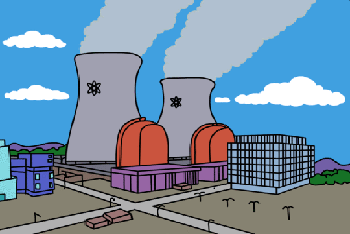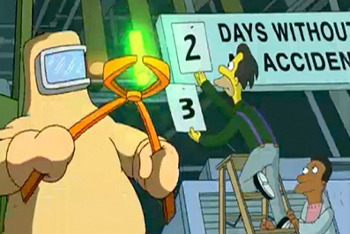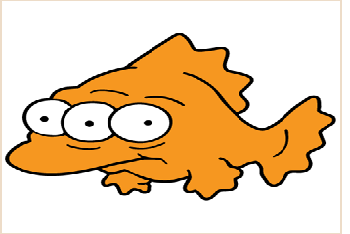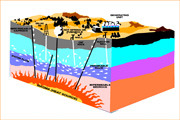Besides the fact that Nuclear Power Plants can make a little fish grow a 3rd eyeball… what else do you know about nuclear energy? If you haven’t heard about the energy crisis, the world is desperate for energy and nuclear energy is a major solution… or is it? Many people think that the power generated by nuclear power plants is worse for the environment in the long run. You might want to learn more about nuclear energy to help make decisions of what is a good source of energy for our future.
What is Nuclear Energy?
Nuclear energy is energy in the nucleus (core) of an atom. Atoms are tiny particles that make up every object in the universe. There is enormous energy in the bonds that hold atoms together. Nuclear energy can be used to make electricity. But first the energy must be released. It can be released from atoms in two ways: nuclear fusion and nuclear fission.
 Isotope Interest
Isotope Interest
In nuclear fusion, energy is released when atoms are combined or fused together to form a larger atom. This is how the sun produces energy.
In nuclear fission, atoms are split apart to form smaller atoms, releasing energy. Nuclear power plants use nuclear fission to produce electricity.
Nuclear power plants
Most power plants burn fuel to produce electricity, but not nuclear power plants. Instead, nuclear plants use the heat given off during fission as fuel. Fission takes place inside the reactor of a nuclear power plant. At the center of the reactor is the core, which contains uranium fuel.
 Radioactive Rods
Radioactive Rods
The uranium fuel is formed into ceramic pellets. The pellets are about the size of your fingertip, but each one produces the same amount of energy as 150 gallons of oil. These energy-rich pellets are stacked end-to-end in 12-foot metal fuel rods, which you might have seen Homer Simpson carrying at the Springfield Nuclear Power Plant.
Fission generates heat in a reactor just as coal generates heat in a boiler. The heat is used to boil water into steam. The steam turns huge turbine blades, As they turn they drive generators that make electricity. Afterward, the steam is changed back into water through a condenser and this water is used again and again. The steam is cooled using lake or river water flowing through tubes in the condenser. Because this water is heated (removes heat from the steam), this lake or river water can be cooled in a separate structure at the power plant called a cooling tower and then be returned to the lake or river.
Nuclear power and the environment
 Tuna Trio
Tuna Trio
Like all industrial processes, nuclear power generation has by-product wastes: radioactive waste and heat. Radioactive wastes are the principal environmental concern for nuclear power. They are ordinary trash, tools, protective clothing, wiping cloths and disposable items that have been contaminated with small amounts of radioactive dust or particles. Safety inspectors make sure that these items never come in contact with the outside environment.
But what happens when there is a natural disaster like the earthquake in Japan? Sometimes the plant leaks these radioactive wastes into the environment because damage. Then what? The surrounding water is polluted, plants will die, animals can grow 3 eyeballs... it's not good.





































